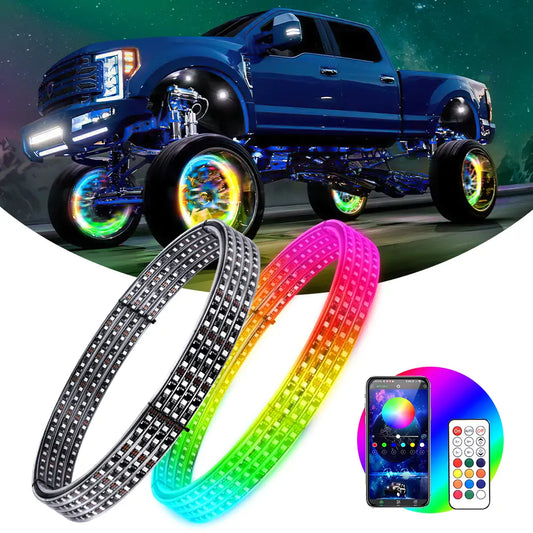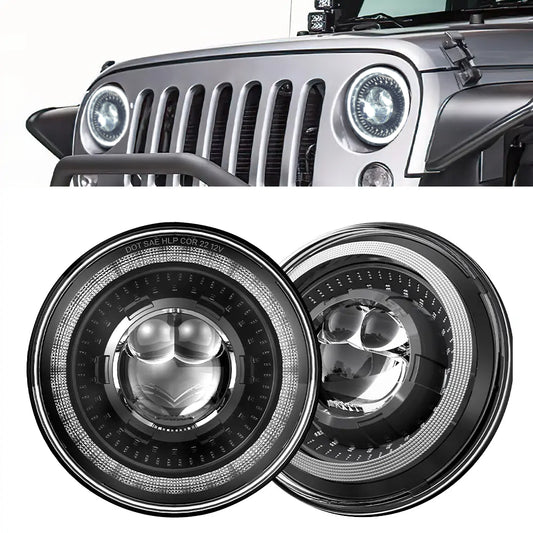Purchasing a Jeep Wrangler can be an exciting step toward off-road adventures. But it also comes with challenges.

When it comes to purchasing a used Jeep Wrangler, especially the 2018-and-newer JL models, there’s a fine line between finding your dream vehicle and ending up with a costly headache. With their rugged design, off-road capability, and iconic status, Jeep Wranglers are highly sought-after vehicles. However, as these models age, rack up miles, and undergo modifications or repairs, separating the gems from the duds can be tricky.
In this guide, we’ll break down five critical factors you need to consider before buying a used Jeep Wrangler JL. Whether you're buying from a dealership, an independent seller, or a private party, these tips will help you make an informed decision and avoid potential pitfalls.
1. Understand the Different Models and Variants
The Jeep Wrangler JL, introduced in 2018, replaced the older JK model but shares some visual similarities that can confuse first-time buyers. Understanding the differences between the JL and JK is crucial. The JL features modern upgrades, such as a push-button start, updated interiors, and improved drivability. It's available in various trims, including the Sport, Sahara, and Rubicon, each catering to different needs.
Key Features to Consider:
· Two-Door vs. Four-Door: Decide whether you need the compact two-door model or the more spacious four-door Unlimited version.
· Transmission Choice: Automatic and manual transmissions are available. Choose based on your driving style and comfort.
· Trim Levels and Packages: The Rubicon is the most off-road-capable trim, while the Sport and Sahara cater to different levels of adventure and comfort. Consider what suits your lifestyle.
With numerous configurations, it’s essential to identify what you need before diving into the used market. Research specific trims and options to avoid being overwhelmed by the variety available.
2. Know the Powertrain Options and Their Quirks
The JL Wrangler offers five engine options, each with its own pros and cons. Understanding these powerplants is key to choosing the right one for your needs.
Available Engines:
1. 3.6L V6 (Pentastar): Reliable and widely used, but watch for oil cooler leaks and valve train noise in high-mileage units.
2. 2.0L Turbocharged I4: Features mild hybrid eTorque technology in some models, which adds complexity. Battery issues can arise if not maintained properly.
3. 3.0L EcoDiesel V6: Great for torque and fuel efficiency but comes with higher maintenance costs.
4. 4xe Plug-In Hybrid: Offers electric assistance but requires careful consideration of battery condition and charging infrastructure.
5. 6.4L HEMI V8 (392): A powerhouse for enthusiasts but overkill for most buyers. High running costs are expected.
Dual Battery Setup:
One unique feature of the JL Wrangler is its factory dual-battery setup. While innovative, it has been a common source of problems. A failing auxiliary battery can drain the main battery, leading to starting issues. Ensure the batteries are in good condition or have been upgraded to avoid this “cyclical nightmare.”
When inspecting a used Wrangler, verify that the engine and battery systems have been maintained properly. Run the VIN to check for recalls and service history.
3. Inspect the Suspension and Steering Components
The Wrangler JL introduced electric-assisted steering, which was a departure from previous hydraulic systems. While innovative, early JL models (2018–2019) suffered from steering quirks, including poor welds at the track bar mount and weak aluminum steering gears. These issues were addressed in later models, but it’s important to verify that any recalls or repairs have been completed.
What to Look For:
· Track Bar and Welds: Early models may have weak welds. Check if aftermarket reinforcements or repairs have been made.
· Tire Wear: Uneven tire wear can indicate alignment or suspension issues. Look for signs of “chopping” or excessive wear on the inside or outside of the tires.
· Lift Kits: Many Wranglers are modified with lift kits. Improper installations can lead to poor handling, “death wobble,” or premature wear of suspension components.
If the Jeep has been lifted over 2 inches, ensure that key components like the track bar, control arms, and steering stabilizers have been upgraded appropriately. Poorly installed lift kits can lead to significant expenses down the road.
4. Check for Rust and Structural Integrity
While the JL Wrangler is less prone to rust than older models like the TJ or JK, it’s still essential to inspect the frame and undercarriage. Rust can compromise the structural integrity and resale value of the vehicle.
Inspection Tips:
· Frame and Undercarriage: Look for rust, especially around welds, skid plates, and control arm mounts. Use a flashlight to inspect hard-to-see areas.
· Body Panels: Aluminum panels on the JL can develop paint bubbling due to corrosion under the surface. Check for signs of paint lifting or bubbling.
· Aftermarket Bumpers and Skid Plates: Inspect these components for rust or poor installation. Repainted parts may be hiding underlying issues.
If possible, bring the Jeep to a mechanic or body shop for a third-party inspection. This can help identify hidden issues that might not be obvious during your initial inspection.
5. Evaluate the Interior and Electronics
The JL Wrangler’s interior is more refined than its predecessors, but wear and tear can still be an issue, especially on high-mileage vehicles. Additionally, the electronics and infotainment systems should be thoroughly tested.
Key Areas to Inspect:
· Seats and Steering Wheel: Look for excessive wear on leather seats and the steering wheel. These can indicate heavy use or neglect.
· Infotainment System: Test all functions, including navigation, Bluetooth, and connectivity features. Some models include premium systems with larger screens.
· Soft Tops and Hard Tops: If the Jeep has a soft top, check for signs of wear, tears, or improper alignment. Hard tops should be inspected for scratches, leaks, or damaged seals.
Test Drive Checklist:
· Steering and Handling: Ensure the Jeep drives straight without excessive play in the steering. Test for “death wobble” by driving over bumps and potholes.
· Braking: Check the responsiveness of the brakes, especially if the Jeep has oversized tires or heavy modifications.
· 4WD System: Test the transfer case by shifting into 4H and 4L. Ensure smooth operation and no unusual noises.
Final Thoughts: Make an Informed Decision
Buying a used Jeep Wrangler JL can be an exciting but challenging process. By understanding the key factors outlined above, you’ll be better equipped to find a vehicle that meets your needs and avoids costly surprises .
Before You Buy:
· Run a VIN Check: Verify the service history, recalls, and accident reports.
· Third-Party Inspection: Have a trusted mechanic inspect the vehicle before purchase.
· Ask Questions: Inquire about modifications, maintenance history, and any known issues.
A Jeep Wrangler is more than just a vehicle—it’s an adventure waiting to happen. By doing your due diligence and taking the time to thoroughly inspect your potential purchase, you can ensure that your Jeep is ready to take you on countless adventures without leaving you stranded or frustrated.




